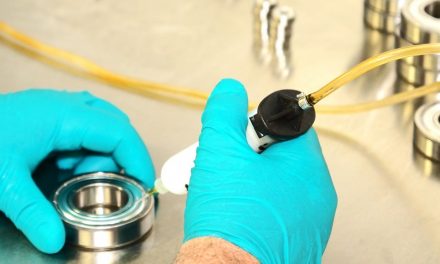Intel’s CEO says Moore’s Law is slowing to a three-year cadence, but it’s not dead yet
Intel CEO Pat Gelsinger is well-known for saying Moore’s Law is still kicking, but he seems to have admitted the pace of the semiconductor industry has at least slowed down. In a talk during Manufacturing@MIT (video below), the CEO stated transistors now double closer to every three years, which is actually significantly behind the pace of Moore’s Law, which dictated a two-year cadence. However, Gelsinger isn’t throwing in the towel, and he outlined strategies to keep pace with the original Moore’s Law.
SOURCE: Tom’s Hardware
Moore’s Law, first proposed by Intel co-founder and CEO Gordon Moore in 1970, holds that the transistor count for chips doubles every two years. This was thanks to the increasing density of new nodes and the ability to create larger chips or dies. However, the pace of the semiconductor industry has been somewhat lagging behind the trend of Moore’s Law in recent years, prompting many (including Nvidia CEO Jensen Huang) to say that Moore’s Law is dead.
Ever since taking the position of CEO in 2021, Gelsinger has emphatically said Moore’s Law is “alive and well.” In fact, he even said Intel could surpass the pace of Moore’s Law at least until 2031 and has promoted “Super Moore’s Law,” a strategy to boost transistor count using 2.5D and 3D chip packaging technologies such as Foveros. Intel also often refers to this strategy as “Moore’s Law 2.0,” and AMD has also said we’re entering the era of a slowed pace of Moore’s Law.
In the talk at MIT, Gelsinger was asked about the potential end of Moore’s Law, and he began by saying, “I think we’ve been declaring the death of Moore’s Law for about three to four decades.” However, he eventually followed this up with, “we’re no longer in the golden era of Moore’s Law, it’s much, much harder now, so we’re probably doubling effectively closer to every three years now, so we’ve definitely seen a slowing.”
On the surface, it seems this is a complete U-turn for Gelsinger, who has previously admitted the Law has slowed to a “two-or-three-year cadence,” but context is important. Though he doesn’t explicitly state it, Gelsinger appears to be talking specifically about process technology when discussing Moore’s Law slowing down. Originally, new nodes used to be enough on their own to achieve a doubling of transistors every two years as Moore’s Law predicted, but the latest processes have come out with weaker density improvements and have even taken longer to arrive, especially in the case of Intel’s Intel 7 and Intel 4 nodes.
Gelsinger said that despite this apparent slowing of Moore’s Law, Intel could create a 1-trillion transistor chip by 2030, when today, the biggest chip on a single package has around 100 billion transistors. The CEO said four things made this possible: new RibbonFET transistors, PowerVIA power delivery, next-generation process nodes, and 3D chip stacking. He ended his answer by saying, “For all of the critics that declare we’re dead… until the periodic table is exhausted, we ain’t finished.”
Still, Gelsinger admitted that Moore’s Law’s economic side is breaking down. “A modern fab seven or eight years ago would have cost about $10 billion. Now, it costs about $20 billion, so you’ve seen a different shift in the economics.”











